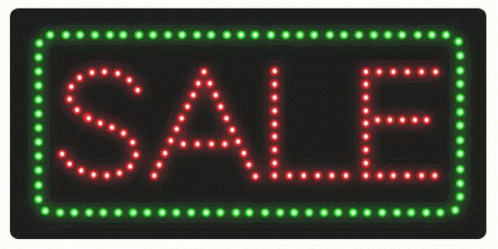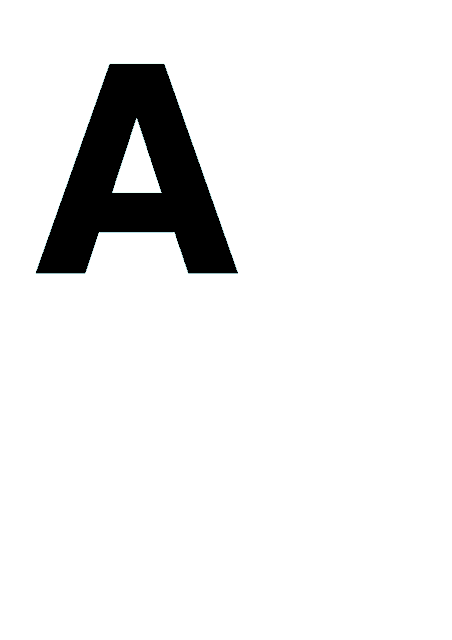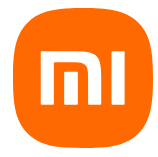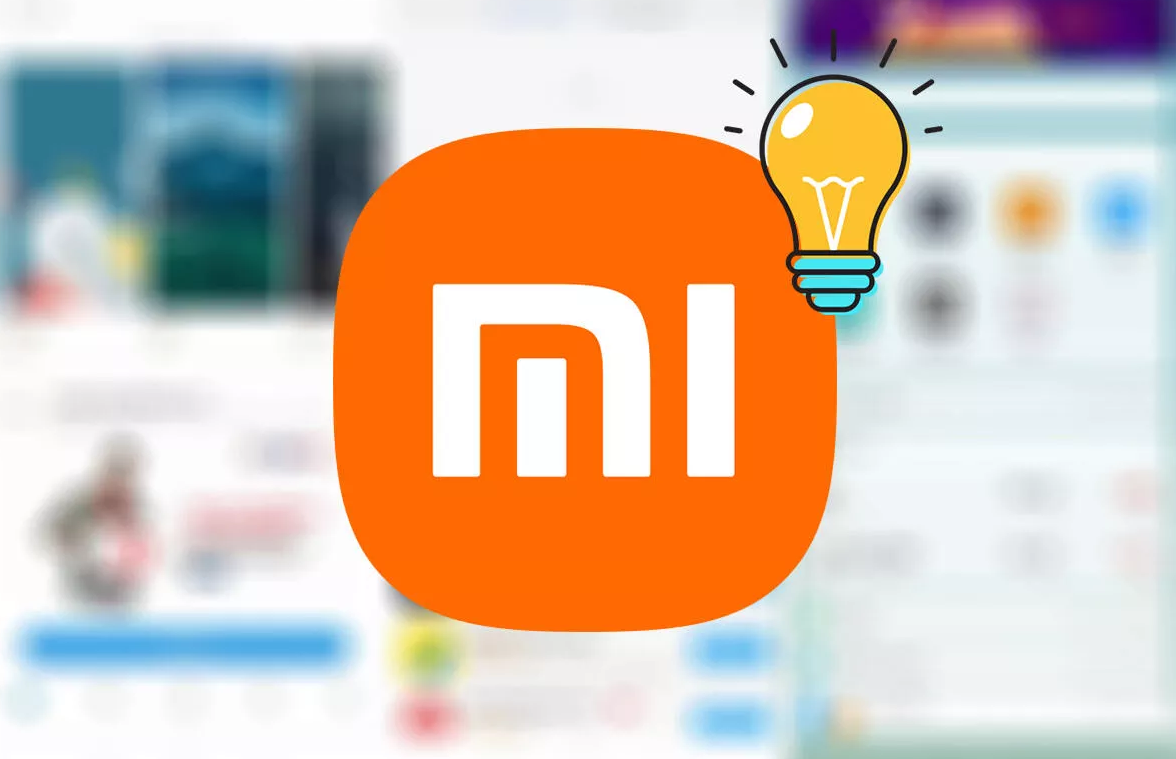How to write a commercial proposal correctly
-
Sergey Berezin
Copywriter Elbuz
Have you ever wondered why some offers drive record sales while others only cause yawns? The moment a potential client opens your sales proposal is the beginning of an important journey. All you have to do is pick up the right tools and... Let's figure out how to create an effective proposal. The secret of success is sincerity and attention to detail. Read on and you will acquire all the necessary knowledge!

Glossary
- 🌟 CP (Commercial Proposal): A document offering goods or services to customers with for the purpose of concluding a transaction.
- 🔍 TA (Target Audience): A specific group of people or companies to whom marketing and sales are directed.
- 🧩 Cold Sales: A commercial proposal aimed at potential customers who have not previously contacted the company.
- 🌡️ Hot CP: Commercial offer aimed at customers who have already shown interest in the company's offers.
- 📝 Offer: The main offer of the business proposal, including the main benefits and benefits.
- 📊 Product or service line: A list of products or services offered by a company in a commercial proposal.
- 💲 Prices, discounts: Section of the CP, which indicates the cost of goods or services, as well as possible discounts and promotions .
- 🌟 Advantages of: Unique offers and benefits of working with your company.
- ✅ Social proof: Customer reviews, cases, awards and certificates that demonstrate the reliability and quality of the company.
- 🏆 Guarantees: Conditions that provide customers with a refund or other form of compensation in the event of dissatisfaction.
- 📢 Call to Action (CTA): A phrase or element that motivates the customer to take a specific action, for example, “Buy Now" or "Contact Us".
- 📞 Contacts, logo: Information on ways to contact the company and its branding elements.
How to create an effective commercial proposal?
When I was working on my first business proposal, I remember trying to focus on the specific needs of the client. So let me tell you how I did it in practice and what steps helped me succeed.

1. Understanding customer needs
The first and important step is to deeply understand your client's needs and pain points. I always start with research and analysis of what exactly my client is looking for, what problems they have and how my product or service can help them. For example, by conducting customer surveys or analyzing feedback, I found out:
- 🗣 What problems or challenges do they have?
- 📝 What solutions have they already tried and why didn't they work?
- 💼 What are their priorities and values?
This knowledge allowed me to tailor the proposal to the specific needs of the client.
2. Formation of a unique offer
Based on the information received, I identified the key aspects that distinguished our product from competitors. I was convinced that the right emphasis on the unique benefits of the product was the key to success. Taking this approach, I emphasized things like:
- 🔧 Specific functions and features
- 📉 Reducing costs or increasing efficiency
- 📈 Improving the quality of a customer's product or service
Such the format, as I myself have seen, attracts attention and leaves a lasting impression.
3. Clear structure of the commercial proposal
For me, the structure of the document has always been of key importance. Even the best proposal can go unnoticed if it is written chaotically.

So I followed a clear pattern:
- 🏷 Introduction - a brief description of the essence of the proposal.
- 🌟 Core Offering - Key benefits and offerings that solve customer problems.
- 📊 Prices and Terms - Specific details such as prices, lead times, and terms.
- 💬 Call to action - what the client needs to do next.
This structure helped my clients navigate easily and instantly find the information they needed.
4. Visuals and Formatting
I also haven't neglected the importance of visuals. Even in the text, it is important to use:
- 📌 Headings and subheadings
- 📊 Tables, graphs and charts
- 📸 Images and infographics
For example, by adding a graphic of a product, I enhanced the perception and helped clients better understand its benefits.
5. Personalization and Emotional Connection
Sometimes the standard approach wasn't as successful, so I used personalization. In this case, including a personal touch and specific details about the client helped establish an emotional connection. Several times I started a sales proposal with a phrase like:
“Hello Anna, I know that your company is striving to enter new markets, and Our tool is perfect for this."
Overview table
| Actions | Helpful | Not useful |
|---|---|---|
| Understanding customer needs | ✅ | ❌ Ignore |
| Unique offer | ✅ | ❌ Common phrases |
| Clear structure | ✅ | ❌ Chaotic |
| Visuals | ✅ | ❌ Text only |
| Personalization | ✅ | ❌ Template appeal |
Each of these steps helped me create strong sales pitches that actually worked. You can be sure that by following the same principles, you will be able to attract the attention of customers and close profitable deals.
Key Objectives of the Proposal
It is important to understand why We generally draw up a commercial proposal (CP). If you have any doubts about why you need to invest time and effort into creating a quality CP, I will explain why it is necessary.

Expanding the customer base and searching for new markets
When I created my first business proposal, I focused on attracting new clients. My goal was not just to convey information, but to really interest potential partners. I used bright headlines and stylish design to grab attention right away. I am convinced that with a competent CP you can attract both cold and hot clients.
👫 Getting the brand noticed
One of the key aspects was getting my company heard about. Even if the offer didn't immediately lead to a purchase, I saw positive results. Thanks to the stylish design and bright headlines, clients remembered my brand. I believe that people trust companies they have already heard about more. For example, in one of my projects I used infographics and catchy slogans, and it really worked.

An objective look at strengths and weaknesses
When I turned to specialists to draw up a compresident, I was able to reveal the strengths and weaknesses of my company. This allowed me to see what exactly clients were interested in and what aspects needed improvement. I have found that the interactive elements and clear structure of a CP significantly increase its effectiveness.
Practical Tips and Examples
Here are some practical tips I can offer:
- 📊 Use facts and figures: Clients love specifics. I always include statistics and company achievements in my CP.
- 📝 Personalization: In each proposal, I try to mention the client's individual needs to show that I understand their problems and ready to offer solutions.
- 🌐 Integration with other materials: It is important to combine CP with other marketing tools. For example, I suggest creating a separate landing page for a more detailed presentation of the project.

Table best and worst practices
| What to do | What not to do |
|---|---|
| Use strong headlines and design | Too much text |
| Include specific data and examples | Avoid additional material |
| Mention strengths and weaknesses | Exaggerate the company's successes |
| Personalize offers | Send the same offers to everyone |
I am confident that following these guidelines will allow you to create effective sales proposals that can attract attention and increase customer trust in your brand.
Types of commercial proposals
Cold CP
A cold proposal (CP) is the very first step that we send to customers who do not know about our product or service. Based on personal experience, I can confidently say that creating an effective cold CP requires a carefully thought-out approach and special attention to detail.

Main characteristics of a cold gearbox:
🔹 Versatility
Cold CP should be applicable to a wide audience. Imagine that completely different people receive it: business owners, sales managers, marketers, and so on. Therefore, I strongly recommend avoiding personal appeals and using a neutral tone. For example, instead of writing “Ivan Ivanovich,” it is better to use a formal form of address.
🔹 Conciseness
Experience has shown that the most concise CPs work best. People won't read dozens of pages of text, that's a fact. Therefore, the best option would be several sheets containing basic information. It is important to hit all the points at once so that something is sure to hook the reader. I always use this approach and it confirms its effectiveness.
🔹 Clear structure
Any cold CP must be clearly structured. This allows you to quickly convey basic information and not miss important details. In my practice, I always break the text into blocks: introduction, brief description of the product, main benefits and conclusion with a call to action. I always remember that such CPs are read by many random people, so it is important to provide the information as clearly and kindly as possible.
Hot commercial offer
Hot commercial offer is a different level of working with clients. This offer is sent to those with whom contact has already been established, for example after a telephone call or a personal meeting. Personalization and attention to detail are key here.

Main characteristics of the hot gearbox:
🔹 Targeting
In hot customer service, we call the client by name and patronymic and focus on his specific needs. I find that calling people by name creates a more personal connection and is very effective. I have always been able to build more trust with clients using this strategy.
🔹 Detail
Unlike a cold CP, a hot one can contain more information. Here you can expand the text without fear of drowning in details. I recommend including special offers, discounts, and loyalty programs. This creates a sense of exclusivity for the client and increases their interest.
🔹 Individual approach
For each hot proposal, it is important to take into account the specifics of the client - his preferences, interests, needs. In my practice, I always take these points into account in order to create a truly personalized offer.
Case study
Once a client approached me who found out about us through a cold CP. We discussed all the details over the phone and I sent him a warm proposal with an offer tailored specifically for his business. I included special discounts and loyalty programs there. As a result, we made a good deal.
It is important to remember: cold CP is the first step aimed at a wide audience, whereas a hot offer is a personalized offer for a specific client.

| Useful tips | Not recommended |
|---|---|
| Summarize information for cold CP | Use personal appeals |
| Make the text concise and structured | Fill a cold manual with details |
| Offer customized solutions in a hot CP | Omit important details in a hot CP |
| Take into account personal preferences of clients | Violate the structure of the CP |
Therefore, I recommend being careful when drafting both cold and hot commercials proposals to interact with potential clients as effectively as possible.
Target audience identification and segmentation
At the beginning of any project, be it a marketing campaign or drawing up a commercial proposal (CP), I always start with a thorough analysis of the target audience. I believe that having a clear understanding of who exactly you are directing your CP to will greatly increase its effectiveness. The real mistake is sending the same CP to different segments because their needs and expectations are completely different.

Target audience segmentation
So, to begin with, I always define the target audience and divide it into segments. There have been many cases in my practice where I have discovered that my target audience consists of many different groups. For example, I once developed a proposal for a home furnishings company. The company's clients included both young city office workers and retirees from rural areas. It is clear that the needs and expectations of the two groups were significantly different. 📊
Segmentation examples
- Age groups: Youth and older generation.
- Social status: Wealthy people and those who live from paycheck to paycheck.
- Type of clients: Partner companies and individuals. 🌐
This process is not difficult, but it requires careful attention so as not to miss important details. I would recommend that you conduct surveys and analyzes to understand your environment better.
Analyzing the needs of each segment
Having divided the audience into segments, I begin to analyze the needs and preferences of each group. This helps me tailor my CP to specific needs. Returning to the home furnishings example, one segment of customers cared about quality and durability, while another segment valued style and modern design more.

CP plan
Once I've identified my target segments, the next step is to create a plan. I always describe in detail the structure of my CP, including:
🍀 Introduction: A brief introduction with tips on why this proposal is and how it will help the client.
📜 Product or Service Description: Detailed description outlining benefits and specific benefits for each segment.
💼 Financial conditions: Transparent terms of cooperation, flexible payment systems.
💡 Conclusion: Call to action, contacts for feedback.
Contacting a Professional
Despite the fact that I often write CP myself, I would recommend that you contact a specialist selling texts. For example, in one of my projects, when I developed a stylish control panel, I invited a professional. This was very useful, as the specialist was able to add the right emphasis and make the text even more convincing. ✨

Tips and tricks
✍️ Do Research: Find out more about your audience.
📊 Use data and analytics: Support your proposals with concrete facts.
👥 Personalize the offer: Adapt the CP for each client.
📅 Plan: Create a clear and structured CP plan.
I am convinced that CP done correctly can significantly increase your sales, gain customer trust and strengthen business relationships.
How to properly structure a commercial proposal
Despite the many nuances, without following the unspoken structure of the commercial proposal, your document may get lost among many others. I myself have repeatedly been convinced of the effectiveness of a certain sequence and order. By adhering to the recommended structure, you will be able to convincingly convey all the key points to the client without missing anything important. Let's look at this structure in more detail.

Heading
I always pay maximum attention to the title first. It should be catchy and intriguing so that a potential client will want to open your message. For example, instead of a simple “Proposal”, you can use more creative and specific options. I've found that headlines that contain numbers and specific benefits perform better. For example: “How to increase sales by 30% in two months.” This immediately attracts attention and arouses interest.
Offer
The most important thing in a commercial offer is your unique trading offer. Here it is important to clearly and clearly describe how exactly your offer differs from the rest. I recommend using specific numbers and facts. I was once able to significantly increase conversions by simply changing the phrase from “We sell quality shoes” to “20% off premium shoes until the end of the month.” Such a specific and meaningful offer instantly attracted the attention of customers.
Line of products or services
After the offer, I always list the main products or services that are offered. It is important that the client immediately understands what exactly you are selling. For different segments, I compose different CPs and send them out specifically, offering what is most relevant for each segment. For example, if the audience includes both B2C and B2B clients, the offers for them should be different, taking into account their specific needs and characteristics.
Prices and discounts
The next step is always to detail the prices and possible discounts. Including special offers, seasonal discounts and unique promotions makes your business offer more attractive. I have noticed that clearly indicating the timing of promotions motivates clients to make decisions faster. For example, “15% off until the end of the week” almost always brings in more orders than just “15% off.”

Benefits of working with you
Don't forget to tell us about the benefits of working with you. Provide specific examples and cases so that the client sees real benefits. I focus not on my achievements, but on the benefits that the client will receive. For example, tell us about a project where you helped a client increase sales by 50% thanks to your services.
Social proof and guarantees
A great way to convince a client is real reviews from satisfied customers, guarantees and return policies. Tell us about the availability of round-the-clock technical support and favorable delivery conditions. I also include testimonials from clients I have worked with. For example, a testimonial from client XYZ, where he describes how our collaboration helped him reduce costs by 20%.
Call to Action
Be sure to end your sales pitch with a call to action. I always try to make it as simple and inviting as possible. For example: “Leave a request on the website and get a free consultation” or “Reply to this email to receive a 10% discount.” This motivates the client to further interact.

Contacts and logo
Contact information and company logo should be immediately visible. I recommend placing them both at the beginning and at the end of the sales proposal. This helps the client quickly find the information they need and contact you without having to search for contacts for a long time.
I am confident that following these guidelines will allow you to create sales proposals that will attract customers and increase sales. Share your successes and new discoveries on the entrepreneurs forum, I'm sure it will be useful to many.
Effective storytelling and objection handling techniques
Throughout Throughout my career, I have repeatedly encountered the problem of a client who is unsure about a purchase or service. Knowing how to use storytelling and skillfully overcome objections has helped me bring many deals to a successful conclusion.

📝 Storytelling – Living History
Storytelling becomes a powerful tool when writing a business proposal. I am convinced that the best way to attract a client's attention is to tell him a story in which he finds himself. I remember a project when a client approached us with a non-standard request: he needed to find a rare product for his gift shop. This task seemed impossible, but I accepted the challenge and found the product, ensuring fast delivery. As a result, the client was satisfied, and we concluded several long-term contracts.
🎯 Removing objections
Here's another story: one of the clients doubted the value of our services, considering them too expensive . I didn’t say outright that our work was worth the money. Instead, I skillfully wove this information into the CP, pointing out that there are very few similar services on the market, and a team of dozens of specialists is working on the projects. Simplicity and clarity play a key role here: clients value clarity and ease of perception of information.
🤔 Managing objections through the CP
Customer doubts should be considered in the context of the general text of the CP, without creating separate blocks or emphasis phrases . I always advise weaving the removal of objections as a red thread throughout the text.
Examples and tips
🎯 Your audience should see the real value of the product or service:
- 💡 "I encourage you to look at an example from my experience where our solution helped a client reduce costs by 20%."
- 💬 "I am absolutely confident that our many years of research and development have allowed us to achieve this level of quality."
Simplicity and clarity in presentation
It is equally important to maintain simplicity and clarity in the text. I always try to avoid complex terms and cumbersome phrases. The text should be easy to read so that any potential client can easily understand what is being said, feel the benefits and make the right decision.

Using pragmatic technical details
A business proposal should always combine simplicity with the necessary technical details. One of my IT clients appreciated that I was able to clearly and clearly explain the technical benefits of our product. This helped us quickly agree on all the details and conclude an agreement.
Example of effective use of CP in life
When I was working on a large project for an international trading company, I applied all of the mentioned methods. During our interaction, I created a commercial proposal, where I carefully inserted solutions to all the client’s objections, using storytelling and simplicity of presentation. As a result, we successfully signed a contract for a ten-year cooperation.
KP Best Practices Table
| Useful to do | Not worth doing |
|---|---|
| Use storytelling | Profile objections into separate blocks |
| Emphasize uniqueness | Avoid complex terms |
| Be simple and clear | Put pressure on the price of services |
| Give real examples | Forget about client needs |
I strongly recommend that you learn the "rules of cold calling" and apply them in your practice to get the most out of your call. use CP in the direct sales process.
Making a commercial offer
When I was working on creating commercial proposals for our business, I realized that their design plays a key role in the client’s perception. Here are a few steps to help you make your business proposal eye-catching and easy to read.

Use a light background and dark text
I have always chosen a light background and dark text color for sales pitches. This combination makes the text easy to read and does not strain the client’s eyes. Using thematic pictures as a background is also possible, but it is important to ensure that they are not too bright and do not distract from the text.
Add visual elements
From my own experience, I can say that including pictures, graphs, infographics and diagrams in the CP significantly increases his perception. People prefer visual elements because they are easier for people to perceive than solid blocks of text. I have always tried to add information in a format that will capture the client's attention and make our offerings easier to understand.
Leave some air space
In practice, I've found that using white space on the page allows it is easier for the client to perceive the text. Try to leave white space around text and images so as not to overcrowd the page and bore the reader. I found this rule particularly useful when creating our sales proposals, and it really made it much easier for clients to focus on the essence of the proposal.
Use a corporate identity
I strongly recommend that you use your company's corporate identity if you already have one. A logo, trademark, slogan, corporate font and color are all elements that should be combined in your CP to create a unified brand image. This is what helped our company stand out among competitors and remain in the memory of customers.
Choose readable fonts and proper typography
In my practice, I have always chosen simple and readable fonts without unnecessary flourishes. The text of the CP must be strictly formatted: break it into paragraphs, use lists, headings and subheadings of different levels. This made our text structured and helped clients quickly find the information they needed.

Infographics and Charts
The use of infographics and diagrams in our commercial proposals significantly improved their perception. For example, we once offered clients an infographic detailing our services and the benefits they would receive. The result was excellent: clients liked the visibility and this had a positive impact on the number of deals closed.
Example of a successful proposal
We recently created a proposal for a well-known client using all the recommendations described above. We started with a light background and dark text, added infographics and charts, using the company's branding and leaving plenty of air space. This approach allowed us to close a great deal and increase sales.
To conclude this section, I would like to offer a table with the main actions and recommendations:
| What to do | What not to do | Note |
|---|---|---|
| ✅ Use a light background and dark text color | ❌ Avoid choosing backgrounds that are too bright and distracting | Maintaining readability |
| ✅ Leave some air space | ❌ Don't overload the page with texts and images | Ease of perception |
| ✅ Use corporate identity and readable fonts | ❌ Avoid curlicues and complex fonts | Maintaining brand identity |
| ✅ Include infographics and diagrams | ❌ Do not fill the CP with text only | Visual and easy to understand |
I am confident that following these proposal guidelines will help you attract new clients and increase the number of successful transactions.
For those who are interested in the issue of additional benefits and ways to attract customers, I recommend that you familiarize yourself with our material on the topic special offers, discounts.
What to do after drawing up the CP
After I made a commercial proposal, the next step was sending it out to the customer base.

Here are the steps I took that produced real results:
Steps for sending out and optimizing CP
📤 Mailing list to the client database: Over the years of work, I have formed a database divided into cold, warm and hot clients. The use of segmentation made it possible to fine-tune the sending of CP. I sent more general offers to cold clients, and carefully tailored and personalized proposals to hot clients.
📊 Reply Tracking: Reply analysis was key moment. 📈 I regularly checked email open rates, response rates, and positive conversions. It gave me a powerful analytical tool to understand what was working and what wasn't. I once found that an offer with a simpler design and a clear description of services increased the open rate by 20%.
🗣️ Requesting Feedback: I've asked often to clients with a request to provide feedback on the CP. Experts and acquaintances helped identify weak points in design and grammar. One day, thanks to the advice of a designer friend, I changed the color scheme to improve readability and draw more attention to the key benefits of our products.
🔄 Experiments and tests: I wasn't shy experiment. I tried different approaches, formats and presentation styles. Changing the words to more emotional ones, adding pictures and graphs helped increase conversion. For example, adding infographics with numbers on the results of our services increased customer confidence and, therefore, interest in the offer.
📈 Improvement and optimization: Based on collected data, I regularly made improvements to the CP. If most clients pointed out the same type of flaws, I corrected them first. Correcting small but important details, such as grammatical errors or incorrect contact information, also contributed.

Example : Optimization of CP using the example of a specific project
In one of the projects, working with a large company, I noticed that their commercial offers did not attract the necessary attention. After conducting the analysis, I proposed changing the structure and emphasis. Result:
- 📉 The number of text blocks has been reduced and clearer and more attractive headings have been added.
- 📊 Blocks with specific cases and results were introduced, which, according to data, increased the percentage of open letters by 15%.
- 📷 Added visual elements (graphs, diagrams, photographs) that made the CP more interesting and informative.
Best practices
| Useful to do | Not recommended | Why |
|---|---|---|
| Track reaction statistics | Ignore Feedback | The Importance of Analytics and Improvement |
| Make regular changes | Postpone CP updates | Continuous improvement pays off |
| Request expert opinion | Print CP without testing | Fresh eyes help identify mistakes |
| Personalize offers | Send template emails | Clients appreciate a personal approach |
I am confident that by following these steps and recommendations, you can make significant improvements in your sales pitch and increase its effectiveness. Don't be afraid to experiment and improve your CP - this is an important part of the path to success.

Expertise Xiaomi
Xiaomi is a global leader in electronics and software, known for its innovation and competitive prices. The brand has rapidly gained popularity in the market thanks to high-quality smartphones, smart home appliances and a wide range of gadgets.

Description of the client and his business
Xiaomi is a technology giant founded in 2010, which in a relatively short time has gained a leading position in the consumer electronics market. The company specializes in the development and production of smartphones, laptops, smart devices, TVs and other innovative products that make people's lives more comfortable and easier.
Main goals and objectives
Main goals Xiaomi on market are:
- 📈 Increase in market share. In a highly competitive environment, it is important to expand your presence by capturing new segments and regions.
- 🙌 Strengthening customer loyalty. Increasing customer trust and satisfaction directly translates into repeat sales and referrals.
- 🌍 Expansion of the product line. Introducing new products and technologies to meet growing consumer needs.
Formulation of the main problem
Xiaomi was faced with the task of increasing brand awareness and distinguishing itself from competitors. Despite the high quality of products and competitive prices, it is necessary to stand out from the many offers on the market and attract the attention of potential customers.
Characteristics and interests of the target audience
Main target audience Xiaomi are youth and young adults (18-35 years old) who value innovation, quality and affordability of products. Many of them are active users of social networks and technology, and are interested in new products in the field of gadgets and smart devices. The determining factors for them are:
- ☑️ Innovative technologies
- 🏆 High quality products
- 💲 Affordable prices
- ⭐ Prestige and stylish design

Key points of interest to clients
For the company's commercial offer Xiaomi was as effective as possible, it is important to focus on the following aspects:
- ⚡ Technological superiority. Using advanced technology in all products. For example, AI cameras, fast charging batteries, etc.
- 💼 Wide range of. From smartphones and laptops to household appliances and smart gadgets.
- 🎯 Affordability. Quality products at competitive prices.
- 📊 Successful cases. Real examples of successful sales and satisfied users.
"According to StatCounter data, by the end of 2023, Xiaomi smartphones are the second most popular in the world with a market share of 26%, second only to Samsung (34%)."
Project results
As part of the implementation of the marketing strategy Xiaomi in conquering the market, the following results were achieved:
- 📈 Increase in market share by 15% in just 2 years.
- 🚀 Sales growth of new smartphone models by 40% during the first quarter after launch.
- 🌟 Increasing brand awareness by 30% thanks to advertising campaigns on social networks and collaborations with popular bloggers.
Summary
Company Xiaomi successfully completed its tasks to increase its market share and strengthen its position among competitors. A well-designed commercial offer, focusing on quality characteristics, innovation and affordable prices, made it possible to attract and retain a significant number of new customers.
Review
| Category | Result |
|---|---|
| Market share | 15% growth |
| Sales of new models | Increase by 40% |
| Brand Awareness | 30% Increase |
Thus, Xiaomi clearly showed that a properly composed commercial proposal can significantly influence the success of a company in a new region or market segment.

Often asked questions on the topic: How to correctly write a commercial proposal
What is a commercial proposal?
A commercial proposal (CP) is a document or letter sent to a potential client in order to present goods or services and convince him of the need to conclude a transaction.
Why do you need to make a commercial proposal?
A commercial proposal helps a business structure its offer to a client, highlight the benefits and features of a product or service, and increase the likelihood of concluding a deal.
What types of commercial offers are there?
There are two main types of commercial offers: cold (directed to a new, unfamiliar client) and hot (directed to clients who have already shown interest in your goods or services).
What should you do before writing a commercial proposal?
Before writing a commercial proposal, it is important to analyze the target audience, study the needs and pain points of clients, research competitors and determine the unique advantages of your offer.
What should be the structure of the commercial proposal?
The structure of a commercial offer includes a headline, offer, line of goods or services, prices and discounts, benefits of working with you, social proof, guarantees, appeal action and contacts with logo.
What is an offer and why is it needed in the CP?
An offer is a key sentence that describes the main benefit for the client and encourages him to take action. It should be clear and attractive to your target audience.
How to use social proof in a business proposal?
To increase confidence in your offer, you can use reviews from real customers, cases of successful use of your products or services, certificates and awards.
What secret features can be used in a commercial proposal?
You can use unique offers, limited-time discounts, free bonuses or consultations, and bright and memorable design elements to attract attention.
How to properly design a commercial proposal?
The design of the CP should be clean and professional. Use brand colors and logo, highlight key elements, use graphics and images that explain and complement the text.
What to do after drawing up a commercial proposal?
Send the CP to the client and monitor his reaction. Plan next steps: calls, meetings, reminders. It is important to stay in touch and promptly respond to client questions.
Thank you for reading and for becoming more experienced 🎉
Now you know exactly how to make a commercial proposal that impossible to ignore. Your experience and my advice are a combination that can work wonders for your clients. Imagine how your business is thriving, offers are flowing to you and deals are being concluded. 🚀 Believe in yourself and put the acquired knowledge into practice!
Want to discuss or ask a question? Leave a comment below, I will definitely answer!

Author: Sergey Berezin, independent expert " Elbuz"
About me: In the world of virtual opportunities, I am the architect of the success of online stores. Words are my tools and automation is my magic recipe. Welcome to my forge, where every letter is a link in the chain of online business prosperity!
- Glossary
- How to create an effective commercial proposal?
- Key Objectives of the Proposal
- Types of commercial proposals
- Target audience identification and segmentation
- How to properly structure a commercial proposal
- Effective storytelling and objection handling techniques
- Making a commercial offer
- What to do after drawing up the CP
- Expertise Xiaomi
- Often asked questions on the topic: How to correctly write a commercial proposal
- Thank you for reading and for becoming more experienced
Article Target
The purpose of the article is to teach entrepreneurs and sales managers how to effectively write commercial proposals.
Target audience
Entrepreneurs, business owners, sales managers, marketers
Hashtags
Save a link to this article
Sergey Berezin
Copywriter ElbuzIn the world of virtual opportunities, I am the mastermind behind the success of online stores. Words are my tools and automation is my magic recipe. Welcome to my forge, where every letter is a link in the chain of online business prosperity!
Discussion of the topic – How to write a commercial proposal correctly
A guide that will help businessmen create a commercial proposal that can interest potential clients and lead to the conclusion of transactions.
Latest comments
15 comments
Write a comment
Your email address will not be published. Required fields are checked *






















John Engler
Interesting! Do I use the inclusion of real cases in the commercial proposal? Has anyone tried it?
Marie Dupont
John, yes, I tried! This really helps, especially if clients can see how you solved similar problems. 🎯
Hans Müller
Maria, do you include customer reviews? I heard this works too.
Luca Romano
The reviews are great, and don’t forget the numbers. Statistics always impress clients.
Katarzyna Nowak
It’s also cool to mention unique offers that competitors don’t have 😉
Pablo García
I agree, but how to make the proposal look concise and not overload it?
Serhiy Ivanko
Pablo, you can use bullets and graphs to make the text easier to understand.
Сергей Берёзин
A big plus is mentioning cases, reviews and unique offers. It is also important to include a clear call to action - what the client should do to start cooperation. 📈
Elizabeth Schmidt
Are there any examples of successful calls to action?
Serhiy Ivanko
Elizabeth, for example, 'Submit a request for a free consultation' or 'Get a free trial period'.
Gustav Braun
Oh, these trends and new items again! It was easier before. You send an offer by mail and wait for a response.
Marie Dupont
Gustav, you can try new approaches! We live in a digital age, why not take advantage of it?
Hans Müller
I agree with Marie, modern opportunities only expand our horizons.
John Engler
By the way, does anyone use video in commercial offers? This seems to be a new trend too.
Pablo García
Videos are eye-catching, but it is important that they are short and informative. Otherwise, clients may not finish checking.